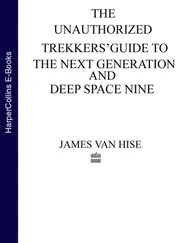1.5.8 Corpus Administration Governing and Protection Factors
Information sources and the development of that information are progressively turning out to be intensely managed, especially for by and by recognizable data. Some broad issues of information approach for assurance, security, and consistency are regular to all applications, however, cognitive computing applications be trained and infer new information or information that may likewise be dependent upon a developing collection of state, government, furthermore, global enactment.
At the point when the underlying corpus is created, almost certainly, a ton of information will be imported utilizing extract–transform–load (ETL) apparatuses. These devices may have risk management, security, and administrative highlights to enable the client to make preparations for information abuse or give direction when sources are known to contain sensitive information. The accessibility of the said instruments doesn’t clear the developers from a duty to guarantee that the information and metadata are consistent with material rules and guidelines. Ensured information might be ingested (for instance, individual identifiers) or produced (for instance, clinical findings) when the corpus is refreshed by the cognitive computing framework. Anticipating great corpus the executive sought to incorporate an arrangement to screen applicable strategies that sway information in the corpus. The information gets to layer instruments depicted in the following area must be joined by or implant consistence strategies and techniques to guarantee that imported and determining information and metadata stay consistent. That incorporates the thought of different sending modalities, for example, distributed computing, which may disperse information across geopolitical limits.
1.6 Ingesting Data Into Cognitive System
In contrast to numerous customary frameworks, the information that is added into the corpus is always dynamic, which means that the information should be always updated. There is a need to fabricate a base of information that sufficiently characterizes your domain space and also start filling this information base with information you anticipate to be significant. As you build up the model in the cognitive framework, you refine the corpus. Along these lines, you will consistently add to the information sources, change those information sources, and refine and purge those sources dependent on the model improvement and consistent learning.
1.6.1 Leveraging Interior and Exterior Data Sources
Most associations as of now oversee immense volumes of organized information from their value-based frameworks and business applications, and unstructured information, for example, the text contained in structures or notes and conceivably pictures from archives or then again corporate video sources. Albeit a few firms are composing applications to screen outer sources, for example, news and online life channels, numerous IT associations are not yet well prepared to use these sources and incorporate them with interior information sources. Most subjective registering frameworks will be created for areas that require continuous access to coordinated information from outside the association.
The person figures out how to recognize the correct sources to sustain his statements or his decision, he is normally based on social media, news channels, newspapers, and also on different web resources. Similarly, the cognitive application for the most part needs to get to an assortment of efficient sources to keep updated on the topic on which the cognitive domain operates. Likewise, similar to experts who must adjust the news or information from these exterior sources in opposition to their understanding, a cognitive framework must figure out how to gauge the external proof and create trust in the source and also on the content after some time. For instance, one can find an article related to medicine in a famous magazine, which can be a good source of information but if this article is contrary to an article published in a peer-reviewed journal, then the cognitive system must able to gauge the contradicting positions. The data that has to be ingested into the corpus must be verified carefully. In the above example, we may find that all the information sources that might be helpful ought to be thought of and conceivably ingested. On the other hand, this doesn’t imply that all sources will be of equivalent worth.
Consider the case of the healthcare in which we can see that an average person meets several doctors or specialists for any health issue. A large number of records will be generated each time he meets the doctors, so Electronic Medical Records (EMRs) help to place all the records in one place and also help to refer them whenever required and doctors can map easily on verifying these records. This helps the specialist to find the association between the blends of side effects and disorders or infections that would be missed if a specialist or scientist approached uniquely to the records from their training or establishment. This cannot be done manually by a person as he may miss or forget to carry all the records with him while meeting the doctor.
A communications organization using the cognitive approach wants to improve its performance to capture or improve their market share. The cognitive system can foresee ant failures in the machine by calculating the inner variables, for example, traffic and traditional patterns; they also calculate the external components, for example, extreme climate threats that are probably going to cause over-burdens and also substantial damage.
1.6.2 Data Access and Feature Extraction
In the diagram data access level has portrayed the principle interface connecting the cognitive system and the external world. Any information that is needed has to be imported from outer sources has to go through the procedures inside this layer. All types of structured, semi-structured, and unstructured data are required for the cognitive application is collected from different resources, and this information is arranged for processing using the machine learning algorithms. To put an analogy to the human way of learning is that it represents the senses. There are two tasks that the feature extraction layer needs to complete. One is identifying the significant information and the second is to extract the information so that it can be processed by the machine learning algorithms. Consider for instance with image processing application where the image representation is in pixels and it does not completely represent an object in the image. We need to represent the things in a meaningful manner as in the case of the medical images, where a dog or dog scan is not useful to the veterinary doctor until the essential structure is captured, identified, and represented. Using Natural Language Processing the meaning in the unstructured text can be identified. The corpus is dynamic hence the data is added or removed from it constantly by using the hypotheses score.
The term Analytics alludes to an assortment of procedures used to discover and provide details regarding fundamental qualities or associations inside a dataset. These techniques are very helpful in guiding us by providing knowledge about data so that a good decision can be taken based on the insights. Algorithms such as regression analysis are most widely used to find the solutions. In cognitive systems, a wide scope of sophisticated analytics is accessible for descriptive, predictive, and prescriptive tasks in many commercial library packages in the statistical software. In further to support the cognitive systems tasks a large number of supporting tools are available. In the present time analytics role in the market has changed a lot. Table 1.1gives us a view of the analytics role that many organizations are experiencing. These analytics helps to learn and understand things from the past and thereby predict future outcomes. Most of the data collected from the past are utilized by business analytics and data scientists to come up with a good prediction. The main important thing in these days is that the technology is growing and it is meeting all levels of the people in the whole world and world has itself become a small global village due to the information technology, so the organizations should learn that they are many dynamic changes in the behavior and taste of the people. Using the advanced analytics it is necessary to build better predictive models so that for any small change in the trade environment these models can react to them.
Читать дальше












